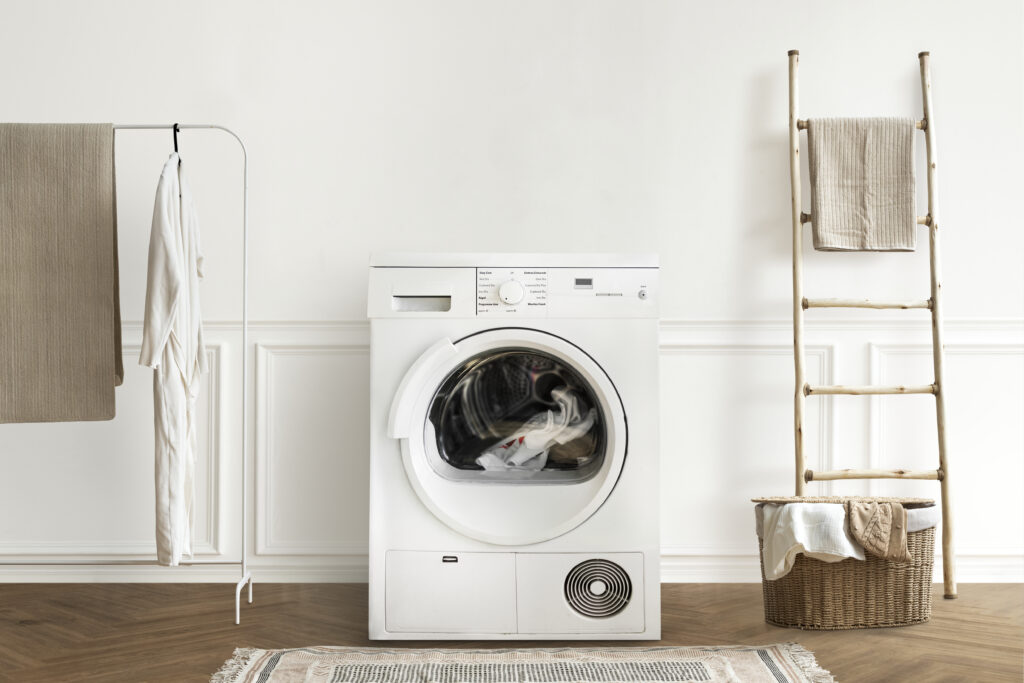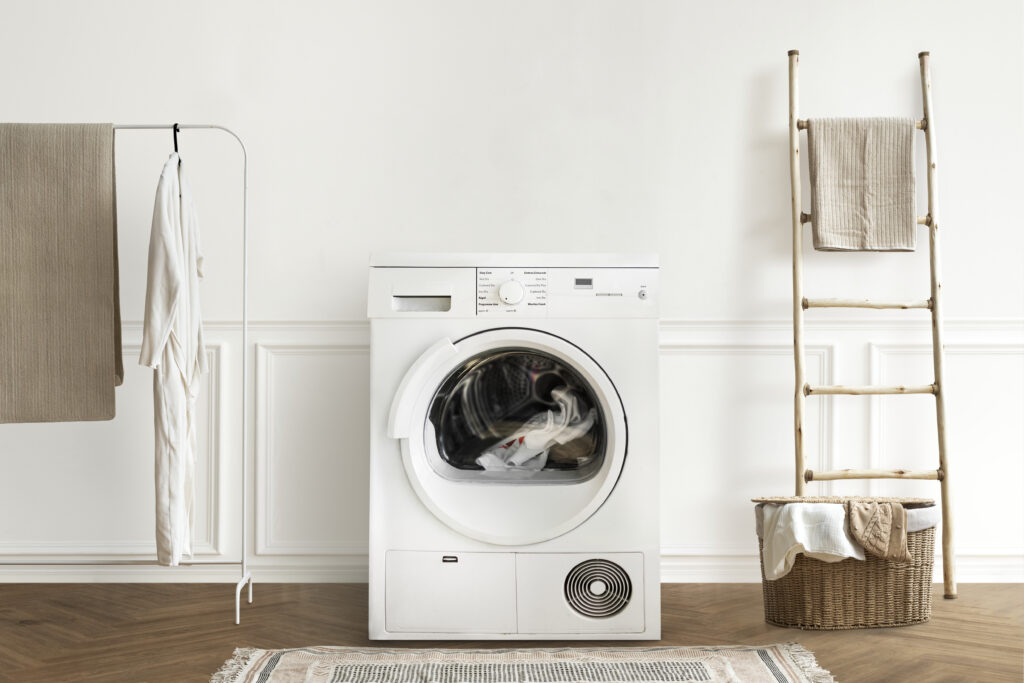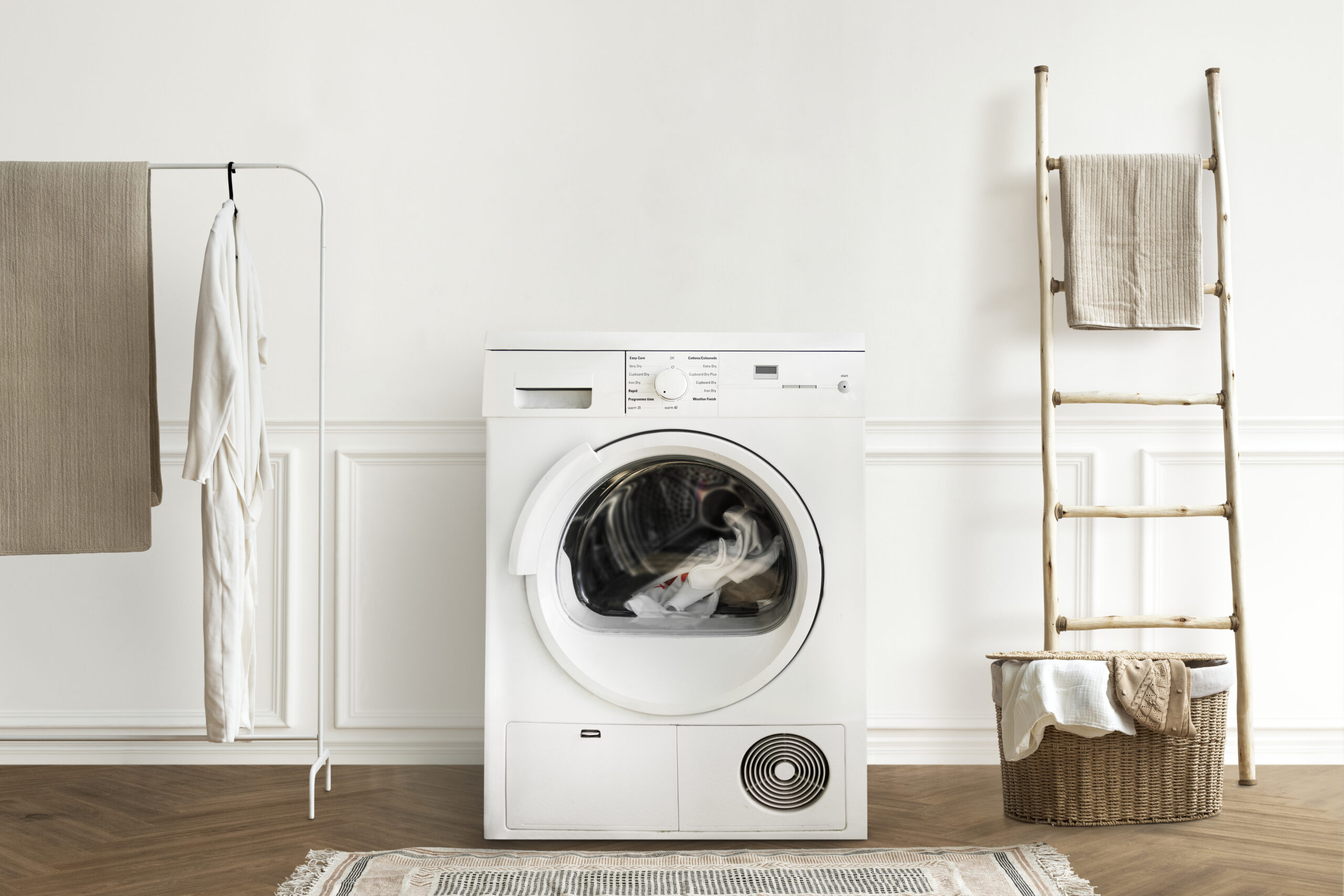Nothing is more annoying than discovering standing water in your washing machine when you open it after a cycle. One of the most prevalent problems that American washing machine owners deal with is drainage. Don’t worry if your washer isn’t draining correctly; many of these issues can be fixed with easy do-it-yourself solutions. We’ll go over the causes of washing machine drain issues, do-it-yourself solutions, and when to hire a pro in this guide
📌 Why Do Washing Machine Drain Issues Occur?
It’s useful to know what might be causing the problem before you grab your tools. Your washer may not drain correctly for a number of reasons:
- 1️⃣ Blocked or Clogged Drain Hose
- The drain hose transports the soiled water from the washer to the standpipe or home plumbing. Lint, cloth, coins, or soap scum can easily clog it. The water may also not drain out if it is twisted or kinked.
- Blocked Pump Filter
A small filter, also known as a drain pump filter, is a feature of many washing machines, particularly front-loading ones, that collects debris like coins, buttons, and lint. This may eventually clog and obstruct drainage.

3️⃣ Bad Drain Pump
During the spin cycle, the washing machine’s water is forced out by the drain pump. The pump won’t force the water out as it should if it is damaged or clogged.
4️⃣ Blockage in the Home Plumbing or Drain Standpipe
Water may back up and stay in the washer if the plumbing that the washer drains into is clogged.
5️⃣ Door lock or lid switch malfunction
The drain and spin cycles on top-load washers may be interrupted by a malfunctioning lid switch. A broken door lock sensor in front-loading washers can also do this.
6️⃣ Inaccurate Load Balance
The washer may become unbalanced and stop the drain cycle before it is finished if heavy, bulky items are loaded or washed.
7️⃣ Electrical or control board problems
Less frequently, problems with the electronic control may stop your washer from starting the drain cycle.
📌 Homemade Solutions for Drain Issues in Washing Machines
The good news is that you can frequently resolve these issues on your own without calling for assistance. Here’s a detailed how-to for diagnosing your washer at home.

✅ First, disconnect the washer.
To prevent electrical shock, always unplug your washing machine from the outlet before doing any repairs or inspections.
Step 2: Examine the Drain Hose
The washer should be moved away from the wall.
Look for any bends, kinks, or obstructions in the drain hose.
Take out the hoses from the drain standpipe and the washer.
To remove any obstructions, run water through it or use a long, flexible brush.
Advice: To prevent more issues, replace any brittle or damaged hoses.
✅ Clean the pump filter in step three.
If the bottom of your washer has an access door or front panel:
To catch water, place a towel and shallow dish underneath.
Unscrew the filter after opening the panel.
Clear away any debris, such as hair, coins, or lint.
Reinstall the filter after rinsing it in warm water.
Pro Tip: To avoid clogs, clean this filter every few months.
Washing Machine Drain Problems? Causes, DIY Fixes & When to Call a Prohttps://omaelectronics.com/why-is-my-washing-machine-not-draining-easy-fixes-pro-advice
Read more: Washing Machine Drain Problems? Causes, DIY Fixes & When to Call a Pro (2025)Step 4: Examine the Drain Pump
During the drain cycle, keep an ear out for odd sounds; a jammed pump may be indicated by grinding or humming.
Access the pump, which is often located behind the washer’s rear or lower front panel, if you feel comfortable doing so.
Look for anything that might be obstructing the impeller, such as socks, coins, or hair ties.
Carefully clear away any debris.

✅ Step 5: Check the door lock or lid switch
Firmly open and close the lid of top-loading washers.
To check if the cycle resumes, try manually pressing the lid switch.
When you close the door on a front-loading washer, you should hear a noticeable “click.”
Note: You can usually find replacement switches or locks for defective ones online or at appliance parts stores.
✅ Step 6: Examine the household drain or standpipe
Take out the drain hose from the standpipe of the washer.
To see if the pipe drains smoothly, pour water down it.
If it backs up, you’ll need to hire a professional plumber or use a plumber’s snake to clear the pipe.
📌 When to Contact an Expert
Many washer drain issues can be resolved at home, but in some cases, professional assistance is required. When to contact a certified appliance repair technician is as follows:
The drain pump is either not operating at all or is grinding loudly.
Error codes that keep coming up include OE, 5E, F9 E1, and ND.
The washer is leaking water.
There is no response from the electrical control board.
You’re not sure whether to disassemble the washer.
Depending on the problem and brand, washing machine repairs in the USA usually cost between $150 and $350.
How to Avoid Drain Issues in the Future
Avoiding drainage issues is greatly aided by routine maintenance. Here are some professional pointers:

Every two to three months, clean the pump filter.
Twice a year, check and clean the drain hose.
✅ Do not put too much strain on the washer.
✅ For small items, use a mesh laundry bag.
✅ Every month, run a cleaning cycle with hot water and vinegar.
✅ Regularly check the drainpipe in your house for obstructions.

📌 Common Error Codes for Washing Machine Drains (USA)
Error Code for BrandWhat It Signifies
LG OE Drain Error
Samsung SE or 5ENot Draining Water
Maytag Whirlpool F9 E1 Extended Drain TimeF9 E1 Drain Problem GE E2 Drain Pump Issue
Advice: For specific error code meanings and troubleshooting steps, always consult the user manual that came with your washing machine.
Conclusion
Although common, washing machine drain issues are typically resolvable. You can frequently check hoses, clean filters, and remove clogs without hiring a professional if you have some basic do-it-yourself skills. Never force parts if you’re not sure how to do them, and always unplug your computer before working on it.
You can avoid future expensive repairs by performing routine maintenance, such as cleaning the drain hose and drain pump filter. But if these easy fixes don’t resolve your washer’s issues, don’t be afraid to call a reputable appliance repair specialist.

Leave a Reply